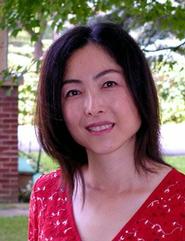
Assistant Professor of Japanese Kyoko Omori contributed essays to a new book, The Modern Murasaki: Selected Works by Women Writers of Meiji Japan, 1885-1912, (ed., Rebecca L. Copeland and Melek Ortabasi, New York: Columbia University Press, 2006). Omori wrote an introductory essay to Higuchi Ichiyô's journal entries (pp. 127-135) and English translation of several journal entries by Higuchi Ichiyô (pp.136-150).
Despite her short career, Higuchi Ichiyô (1872-1896) is arguably one of the most influential and widely known woman writers in Japan. She is especially renowned for
her beautifully written stories about the lives of women in less privileged neighborhoods of Tokyo during early modern times. With her portrait on the Japanese 5000-yen bank note, and her work turned into TV dramas, cartoons and feature films repeatedly, Ichiyo enjoys continuing popularity even 110 years after her untimely death at the young age of 24. Omori's introductory essay examines this famous writer as the first professional/commercial woman writer in modern Japanese literature, and analyzes the function of her diary as a literary practice. Her English translation of Higuchi's journal entries follows the essay.
Posted November 1, 2006
